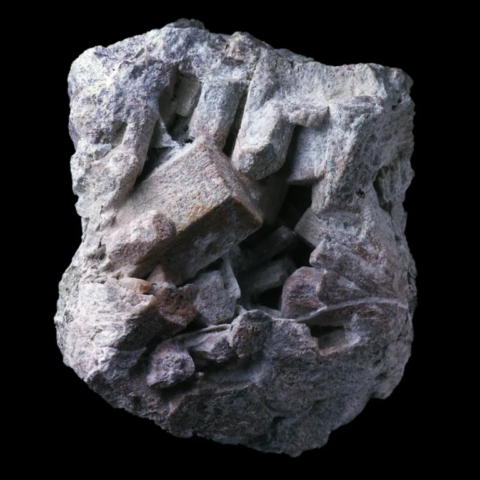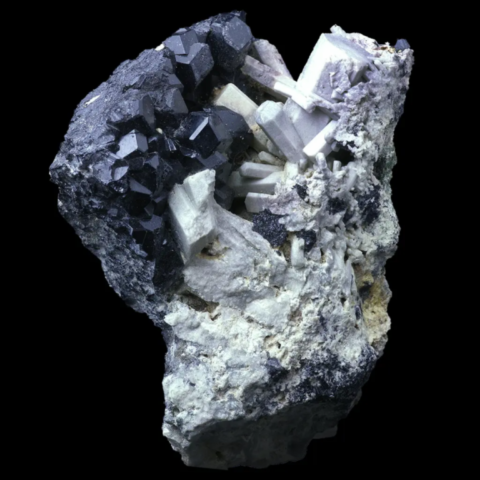NEPHELINE
Class : Silicates
Subclass : Tectosilicates
Crystal system : Hexagonal
Chemistry : (Na,K)AlSiO4
Rarity : Fairly common
Nepheline is a common feldspathoid which is found preferentially in nepheline syenites, where it is sometimes mined as an aluminum ore, and in certain silica-poor lavas : calc-alkaline phonolites (with sanidine and plagioclases) and alkaline phonolites (with anorthosite). Its name comes from the Greek nephelê (cloud), because it develops a cloudy appearance when immersed in strong acids. Transparent to translucent, nepheline is of various colors : greyish white, grey, greenish, greyish yellow, often brownish. It most often forms xenomorphic grains, with a greasy luster ("elaeolite" variety of the old authors), sometimes pluricentimetric, as in the nepheline syenites. Its free crystals are rare : they are hexagonal primes ending in a flat face. Hypogenic transformation of nepheline into cancrinite or zeolite is not uncommon. Sensitive to atmospheric alteration, it disintegrates easily at outcrops, inducing, in tropical climates, the formation of bauxite.
Photo : Nepheline from Jebel Bou-Agrao, Amersid, Aït Oufella Caïdat, Midelt Cercle, Midelt Province, Drâa-Tafilalet Region, Morocco
Nepheline in the World

Nepheline in France
In France, nepheline is present in very small crystals in the geodes of the phonolite of Puy Griou (Cantal), and in the nepheline syenite of Fitou, in the Pyrenees.
Twinning
Twins are common on {1010}, {3365} and {1122} but impossible to discern with the naked eye.
Fakes and treatments
No fake inventories for this mineral species.
Hardness : 5.5 to 6
Density : 2.55 to 2.66
Fracture : Sub-conchoidal
Trace : White
TP : Translucent to transparent
RI : 1.526 to 1.546
Birefringence : 0.003 to 0.004
Optical character : Uniaxial -
Pleochroism : None
Fluorescence : None
Solubility : Acids
Magnetism : None
Radioactivity : None

